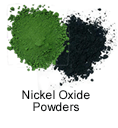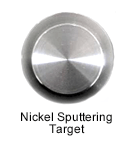Ways to Prevent Nickel Allergy Flare-Ups
Oh, those awful times when a nasty nickel allergy has a flare-up! The welts, teary eyes, the rash, and the itching is nasty! So what are the best ways to prevent these flare-ups?Basically it comes down to this basic tip...AVOID EXPOSURE TO NICKEL.
Ugh! It's that simple. But simple is not easy to do!
What if I have a mild nickel allergy?
Then you should avoid prolonged exposure to items containing nickel. And the biggest culprit for you is jewelry. Earrings, necklaces, bracelets are the items that often contain nickel and are worn for prolonged periods of time on bare skin.What if I have a severe nickel allergy?
The best way to avoid a nickel allergy flare up is to avoid ALL contact with nickel. Now we're talkin' food, cigarettes, cell phones, jewelry, water, vitamin supplements, zippers, keys, cosmetics, hair color, kitchen utensils, and more.It becomes quite a task to avoid exposure when the nickel allergy is this severe. You will probably have real exposure everyday. So the mindset is to avoid any exposure that you are aware of and try to "deal with" the rest of the exposure.
Home test kits like Athena Nickel Solution are the best way to test and identify items that have nickel. Then avoidance to exposure becomes a reasonable task.
<<<<<<click here for the product info
4 Tips For Preventing Nickel Allergy Flare-Ups
>>Wear Nickel-Free/Hypoallergic Jewelry
The best bet for nickel-free jewelry will be made from the following metals:- nickel-free stainless steel
- surgical-grade stainless steel
- titanium
- 18-karat yellow gold
- nickel-free 14-karat yellow gold
- sterling silver
- copper
- platinum
- nobium
- Argentium sterling silver
Very soon I'll write a blog post about places to find earrings. My favorite site is Naturally Nickel Free This shop is also on Facebook. Donna Jo is the artisan/owner at Naturally Nickel Free. She has beautiful necklaces, earrings, and made-to-order jewelry.
>>Choose A Piercing Studio Carefully
Each state varies in regulations regarding tattoo and body piercing. Make sure to check out the regulations for your state or local health department to find out what rules apply to your area and be certain to choose a reputable studio with licensed piercers.Mayo Clinic recommends taking a visit to a studio before getting a piercing to make sure that the piercer:
- Provides a clean, tidy, professional environment
- Uses sterile, nickel-free or surgical-grade stainless steel needles in sealed packages
- Sells only hypoallergenic jewelry and can provide documentation of metal content
- Doesn't use a piercing gun, which may not be sterile or nickel-free and may cause other complications, such as a bacterial infection

>>Use Other Materials As A Substitute
You can find safer substitutes that do not contain nickel:- watchbands made from plastic, cloth, or leather
- zippers and clothing fasteners made from plastic or coated materials
- plastic or titanium eyeglass frames
- wooden or plastic bracelets and kitchen tools
>>Make Protective Shield
Let's face it....even with all these steps, we're going to have daily exposure to items containing nickel. Work place items like door knobs, keys, and home items like kitchen pans will be unavoidable.If you MUST handle nickel exposure, you can create a protective shield between you and the nickel. Consider wearing gloves to shield your hands to help. You can cover buttons, snaps, zippers with clear nail polish or Athena Nickel Solution (see the photo above). Tool handles can be covered with duct tape.
Read the Mayo Clinic article on Nickel Allergies here.
An important point is to recognize that once you develop a nickel allergy—which can occur at any age—it’s typically a lifelong condition. And prolonged exposure risks more severe allergic reactions. So limiting exposure will help prevent more severe allergies and reactions in the future.
Looking back on my lifetime of habits and all the nickel exposure I endured, I have regrets. I knew that cheap earrings caused mild flare ups. But add to that 20+ years of hair dyes and cosmetics, and that was all it took for my nickel allergy to become severe. I wish I'd known where this was going, and maybe I would have done things differently. (sigh!)I would love to know your experiences with nickel allergies and how you prevent flare-ups. Feel free to comment below or contact me.























